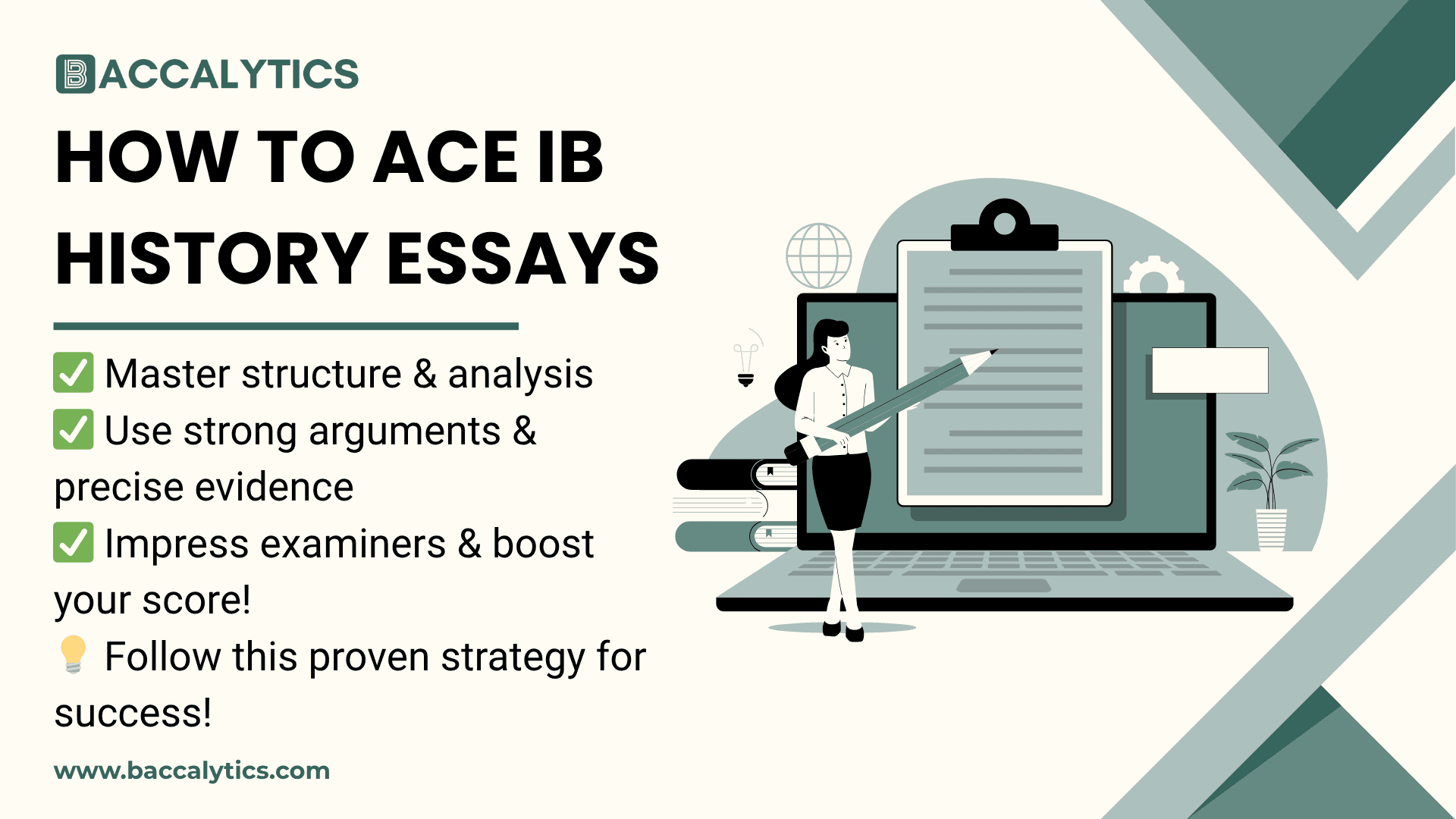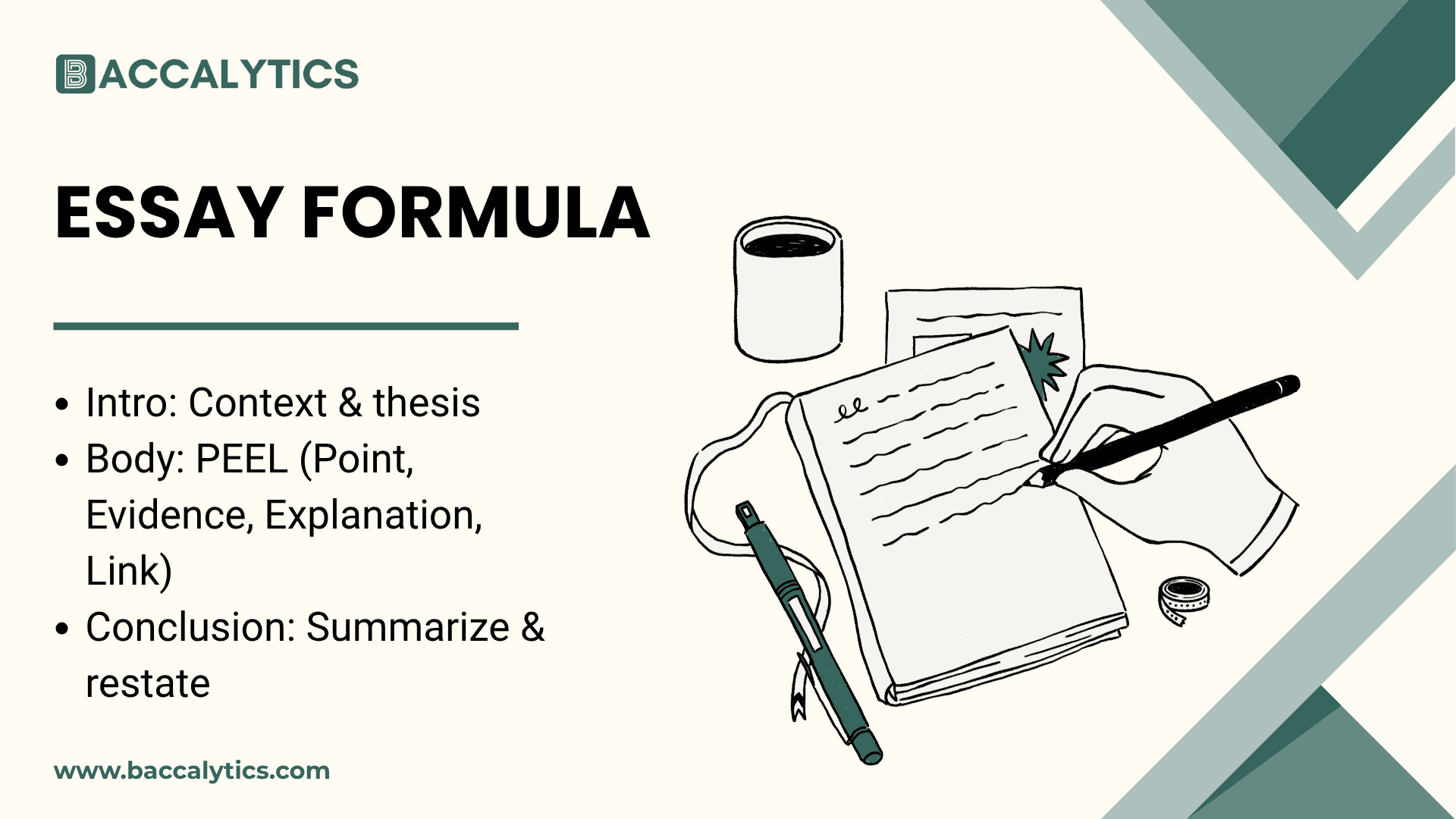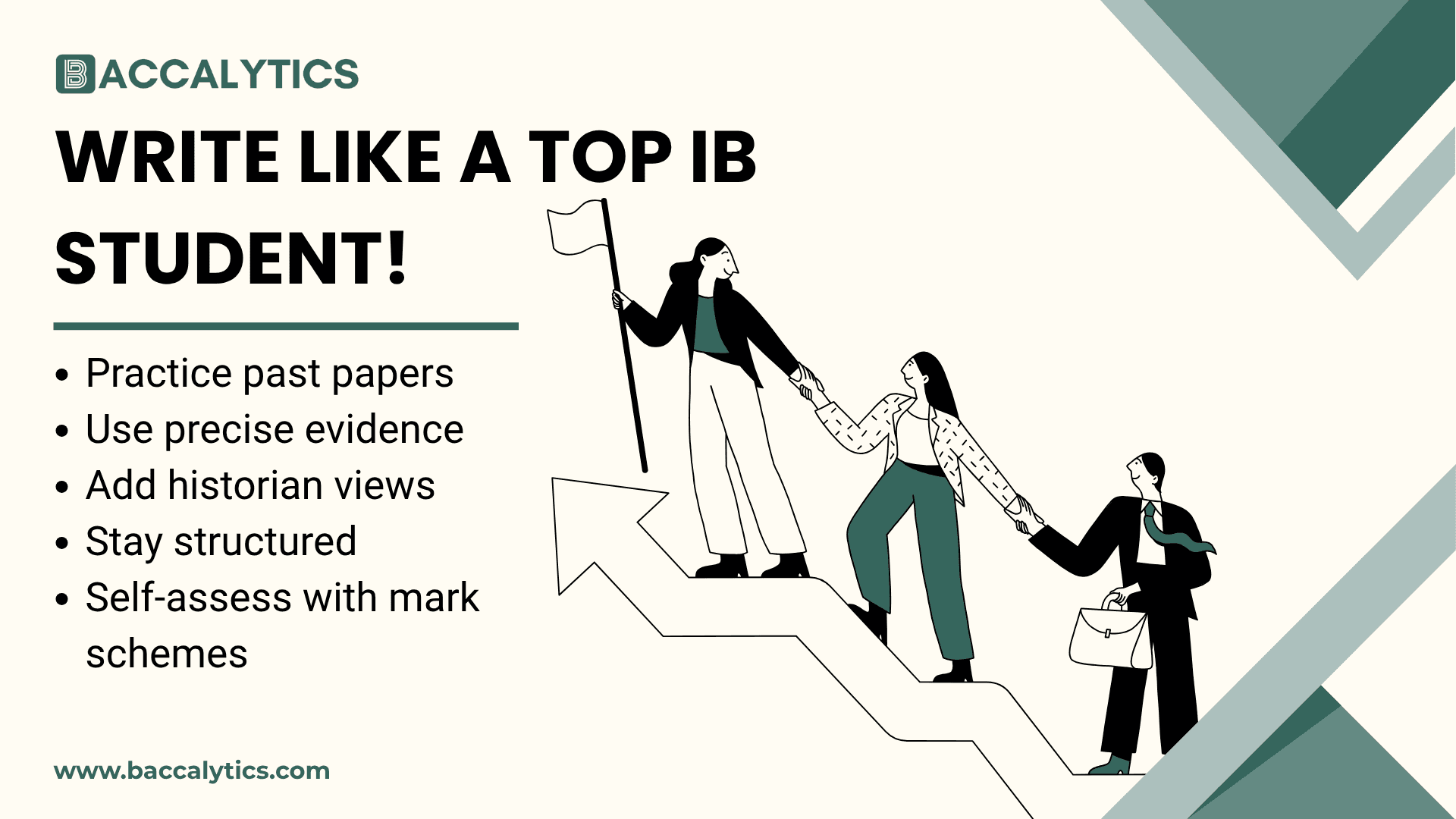
How to Ace IB History Essays: A Proven Structure for High Marks
Syeda Rimsha
Scoring high marks in IB History essays requires a clear structure, strong arguments, and effective analysis. With a well-planned approach, you can craft essays that impress examiners and maximize your score. This guide provides a proven structure to help you excel.
1. Understanding the IB History Essay Criteria

Examiners assess your essay based on:
- Knowledge and Understanding – Demonstrating a deep understanding of historical facts and concepts.
- Application and Analysis – Effectively applying knowledge to answer the question.
- Synthesis and Evaluation – Providing critical analysis, different perspectives, and substantiated judgments.
- Use of Evidence – Supporting arguments with accurate and relevant historical evidence.
- Structure and Organization – Presenting ideas in a coherent and logical manner.
2. Proven Structure for High-Scoring IB History Essays
Introduction (10%)

- Address the Question: Restate the essay question in your own words to show comprehension.
- Provide Context: Briefly outline the historical background related to the topic.
- State Your Thesis: Present a clear argument or stance that will be developed in your essay.
- Outline Your Essay: Summarize the main points you will discuss.
Body Paragraphs (80%)
Each paragraph should follow the PEEL structure:
- Point – Introduce the key argument of the paragraph.
- Evidence – Provide specific historical examples to support your argument.
- Explanation – Analyze the significance of the evidence and how it supports your thesis.
- Link – Connect the paragraph to the next one or back to the main thesis.
Example Paragraph Structure:
- Topic Sentence: "The Treaty of Versailles significantly contributed to the rise of Nazi Germany."
- Evidence: "The harsh reparations led to economic collapse and resentment in Germany."
- Explanation: "This fueled nationalist sentiments and enabled Hitler’s rise."
- Link: "Thus, the Treaty played a critical role in shaping interwar tensions, leading to WWII."
Counterargument and Evaluation
- Address opposing views to demonstrate balanced analysis.
- Critically assess the strengths and weaknesses of different perspectives.
- Use historiography (quotes or viewpoints from historians) where applicable.
Conclusion (10%)
- Summarize Key Arguments: Reinforce the main points discussed.
- Restate Your Thesis: Reaffirm your position with a conclusive statement.
- End with Impact: Provide a thought-provoking insight or question for further consideration.
3. Tips for Excellence

- Practice with Past Papers: Familiarize yourself with IB-style questions and timed writing.
- Use Precise Evidence: Avoid vague generalizations; always support points with specific historical details.
- Incorporate Historiography: Citing historians' perspectives can enhance your analysis.
- Stay Structured and Concise: Ensure your argument remains clear and relevant throughout.
- Revise and Self-Assess: Use mark schemes to evaluate and improve your essays.
By following this structured approach and refining your writing techniques, you can master IB History essays and achieve top marks!
